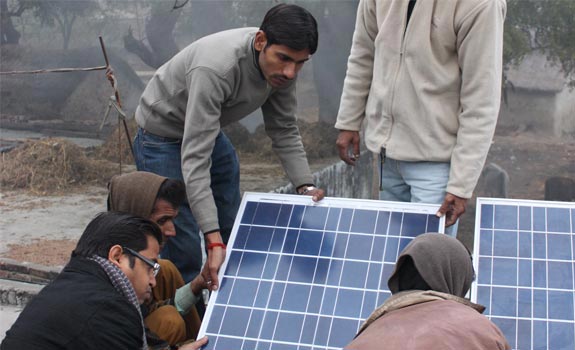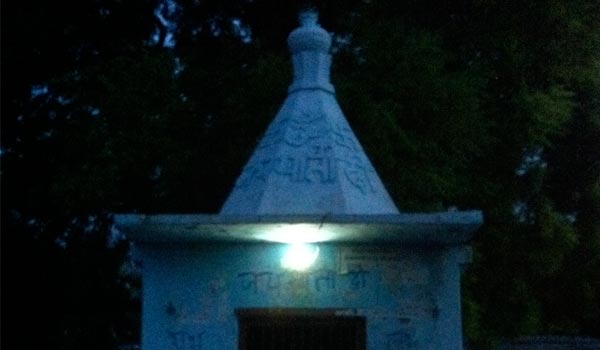Mera Gao Micro Grid Power. Solar-powered network systems for rural off-grid villages.
The world's off-grid population - who are also the world's poorest - not only rely on dirty and unsafe sources for their energy needs (kerosene for lighting, charcoal for cooking), but they are also paying a much higher price for energy needs than their grid-connected counterparts.
We've seen a number of off-grid projects respond to this energy economics paradox, such as EGG-Energy, Simpa Networks, EarthSpark International, and now we're seeing something in between no-grid and grid: the microgrid.
Mera Gao Micro Grid Power is a "micro-lighting utility" , installing local grid systems in Uttar Pradesh, an Indian region close to the Nepalese border.
The MGP system simply consists of
- four solar panels, enough to power 100 households, which are mounted onto a household,
- a battery bank to provide 2-days worth of electricity,
- a low-voltage power distribution network,
- LED lamps for households.
Mera Gao (meaning "My Village" in Hindi) is constantly and cleverly optimizing their microgrid design to reduce costs and provide a robust system. For instance, the system runs at low-voltage (24V), allowing to use aluminum wiring, rather than expensive copper wiring which is needed for high-voltage transmission (and which also leads to copper theft). Another design feature to be included is that circuit breakers will trip if someone tries to steal electricity.
Mera Gao MGP provides the capital investment of the system, which is about $2500. In return, the customers of the community sign up and pay a small initiation fee and receive 2-4 LED lamps, followed by a monthly "subscription" of 100 rupees ($2). This fee covers .2 amps for 7 hours per night, enough to power two LED lights and a mobile charger. Normally, a household will pay 100-150 rupees for these services, so the economic transition payoff is immediate for the customer.
The lack of investment is extremely important for adoption of the system - we've seen that with retail models selling individual solar lamps and systems, the upfront cost is often a huge barrier for customers to make the transition from kerosene to solar, even if the breakeven point comes after just a couple months. This challenge has led to many creative lending and rent-to-own business models as seen with Eight19 and Simpa Networks.
Mera Gao MGP is a for-profit social enterprise, striving for a 15% minimum return on investment (ROI) for investors. With MGP's model, returns start coming in after about a year and half, making it a win-win situation for all.
Since last summer, Mera Gao has installed systems in 9 villages and hopes to reach another 70 villages (providing electricity for 3,000 customers) by the end of this year!
The microgrid is undoubtedly a promising solution for communities lacking basic energy needs - but as the Rocky Mountain Institute perscribes, could the microgrid also be the necessary foundation for a more intelligent, electrified, efficient energy system of the future for us all?




